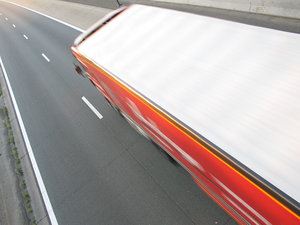 Underride guards are designed to prevent underride deaths and injuries in semi-truck accidents, particularly when a passenger vehicle strikes the back of a big rig. However, they don't always work as intended. The Insurance Institute for Highway Safety (IISHS) analyzed the issue to determine whether or not the underride guards on various large trucks are effective - and under what circumstances they tend to fail.
Underride guards are designed to prevent underride deaths and injuries in semi-truck accidents, particularly when a passenger vehicle strikes the back of a big rig. However, they don't always work as intended. The Insurance Institute for Highway Safety (IISHS) analyzed the issue to determine whether or not the underride guards on various large trucks are effective - and under what circumstances they tend to fail.
Unfortunately, the Institute found that these devices tend to fail in low-speed crashes, often resulting in fatal consequences. As a result of their findings, the IIHS petitioned the federal government to issue new regulations that would require much stronger guards; the goals is to keep them in place during a trucking accident in Missouri and elsewhere.
These guards are in place to help reduce the risks of underride injuries and deaths for passenger-vehicle occupants. Statistics from 2009 conclude that approximately 70 percent of the more than 3,000 motorists that were killed in traffic accidents with a large truck were occupants of the smaller vehicle.
The front of most cars are in fact designed to absorb a lot of energy in the event of an accident. This absorption aims to reduce the risks of occupant injury. But it's a whole different story when you're hitting the back of a large truck. Even if you're riding in a vehicle that has received a 5-star safety rating, you're still at a serious risk for death if the large truck's guard fails. It's not likely that you'll walk away from a low-speed accident.
The IIHS has been studying these underride guards on trucks for more than 30 years. The most recent study, the Large Truck Crash Causation Study, looked at more than 900 accidents that happened from 2001 to 2003 in an attempt to figure out which accident patterns lead to rear underride.
Severe underride occurred in more than 100 accidents that involved a vehicle running into the back to a large truck. Only about 20 percent of these accidents didn't involve any underride or very small amounts of underride. There were 28 accidents in which a passenger-vehicle occupant died. About 23 of these reported severe underride damage.
The National Highway Traffic Safety Administration (NHTSA) concluded that about 425 passenger-vehicle occupants are killed each year because of rear-end collisions with large trucks. They also estimate that about 5,000 people are injured.
Neither NHTSA nor the IIHS study these accidents to determine a vehicle's safety rating, but they test to determine the effectiveness of these underride guards. Lund says that the damage that resulted in some of these car was so catastrophic that he had a hard time watching the results.
These studies have also concluded that underride guards that meet Canadian's specifications are much safer American underride guards. Current American certification standards require that the trailer and the underride guard be tested together. The problem is that only some manufacturers test this way.
If you or a loved one has been involved in a trucking accident in Missouri, call 1-888-777-AUTO (2886) today for a confidential consultation to discuss your rights.
Attorney meetings by appointment only
